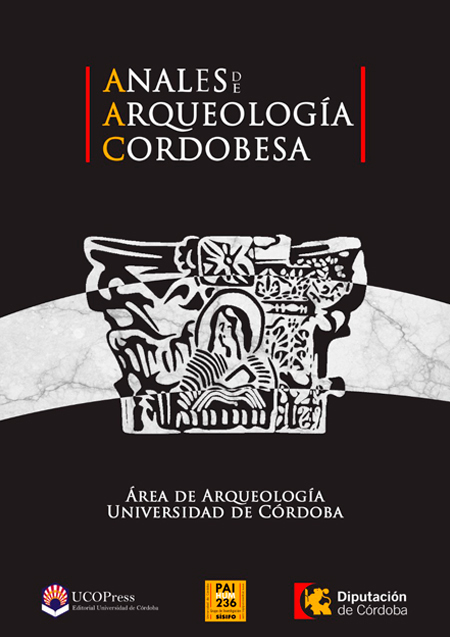The origins of Complutum: the discovery of the ground plant of San Juan del Viso’s Roman city (Guadalajara, Madrid)
DOI:
https://doi.org/10.21071/aac.v0i0.6434Keywords:
San Juan del Viso's hill, Complutum, archaeological suvegs, photointerpretation, romanization.Abstract
The discovery of the plan of a new Roman city on San Juan del Viso hill (Villalbilla, Madrid), has shown new evidences that might change the traditional interpretation of the origin and development of early Romanization in the Henares valley. Until now, scholars have focused on the city of Complutum, at Henares valley, to explain such development. The city uphill has a Hippodamean plan and its foundation is related to a pre-Roman settlement, and the legionary fortress in close nearby. By using aerial photographs combined with orthophotos and archaeological surveys, we have identified the limits and distribution of these three settlements on the hill. The city of San Juan del Viso has a grid pattern with straight streets and rectangular several, different buildings and a theatre. The present work compares this settlement pattern uphill with the city of Complutum in order to understand the origin and development of Roman occupation in the centre of the Iberian Peninsula. This brings new light to the debate on early Romanization in this region; as a result, the conventional interpretation of Complutum should be reexamined.Downloads
Download data is not yet available.
Downloads
Published
2013-12-01
How to Cite
AZCÁRRAGA CÁMARA, S., & RUIZ TABOADA, A. (2013). The origins of Complutum: the discovery of the ground plant of San Juan del Viso’s Roman city (Guadalajara, Madrid). Anales De Arquelogía Cordobesa, 95–116. https://doi.org/10.21071/aac.v0i0.6434
Issue
Section
ARTICLES
License
Aquellos autores/as que tengan publicaciones con esta revista, aceptan los términos siguientes:- Los autores/as conservarán sus derechos de autor y garantizarán a la revista el derecho de primera publicación de su obra, el cuál estará simultáneamente sujeto a la Licencia de reconocimiento de Creative Commons que permite a terceros compartir la obra siempre que se indique su autor y su primera publicación esta revista.
- Los autores/as podrán adoptar otros acuerdos de licencia no exclusiva de distribución de la versión de la obra publicada (p. ej.: depositarla en un archivo telemático institucional o publicarla en un volumen monográfico) siempre que se indique la publicación inicial en esta revista.
- Se permite y recomienda a los autores/as difundir su obra a través de Internet (p. ej.: en archivos telemáticos institucionales o en su página web) antes y durante el proceso de envío, lo cual puede producir intercambios interesantes y aumentar las citas de la obra publicada. (Véase El efecto del acceso abierto).


